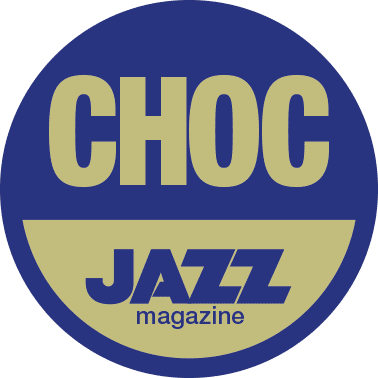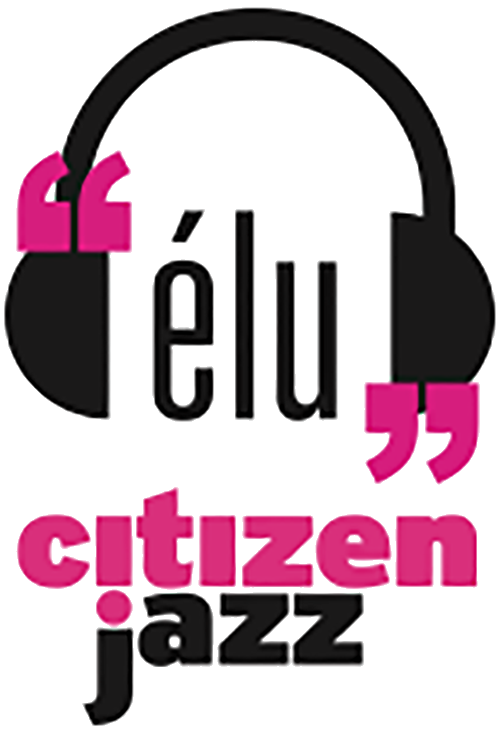Hugues Mayot L’Arbre Rouge
If the music of Hugues Mayot is welcoming, it’s because it is woven at the family hearth. But family and welcome do not necessarily mean peace and indulgence in every room of the house. There are storms, crises, reconciliations too. And all of that can be found in The Red Tree. But there’s also lace, craftwork, homemade goods. Like the work Louise Bourgeois was fond of making. She was someone whose work was shot through with red, trees, family, and roots. Someone whose work resembles a cocoon in which it’s good to live, even if sometimes it’s too cold or too hot. Because an artist should avoid the tepid at all costs. Even if it means getting burnt. The Red Tree remains welcoming in spite of all traces of burns, and this is far from being the least of its qualities.
Mathieu Durand
Artists
Hugues Mayot – saxophone / clarinet
Théo Ceccaldi – violin / alto
Valentin Ceccaldi – cello
Sophie Bernado (and Alma Mayot) – bassoon
Joachim Florent – double bass
About the album
All compositions by Hugues Mayot
Recorded by Boris Darley at Studio Ouanne in Moulins-Sur-Ouanne on September, 2017
Mixed by Boris Darley
Mastered by Céline Grangey
Artwork: László Huszár / Greenroom
Produced by László Gőz
Label manager: Tamás Bognár
Hugues Mayot plays D’Addario reeds and mouthpieces
Théo Ceccaldi uses Corelli Cantiga strings
Reviews
Michael Ambrosino - 33third.org/best-2019 (en)
Ludovic Florin - Jazz Magazine (choc) (fr)
Franpi Barriaux - Citizen Jazz (élu) (fr)
Matti Komulainen - Hifimaailma (fin)
Olasz Sándor - Riff.hu (hu)
Turi Gábor - Gramofon **** (hu)
Komlós József JR - Alföldi Régió Magazin (hu)
Szabó Károly - hangzasvilag.hu (hu)
Hugues Mayot: L’Arbre Rouge
The album is available in digital form at our retail partners
(find original French text below)
It’s a hazy memory and I don’t even know if it’s real. But I think it says something about Hugues Mayot and the group of musicians he belongs to. It was winter, in Nevers, at the 21st edition of the festival of Bourguignon. It was 2007, a year with a big train strike, and I’d arrived with a car-share, ultra-early in the morning, so as not to miss the event. On the bill was the group Radiation 10, a kind of mini dream team of local boys. The future of French jazz, that I felt I absolutely had to see, after having heard so much about them. I wanted to be on top of things, and I’d decided to have a siesta - something I refuse to consider a habit. And there’s nothing worse than a siesta that outstays its welcome. I woke up too late, ran all the way to the theatre, and I saw a few young folk chatting in front of it. There was a glimmer of hope: perhaps it hadn’t started yet?
No. Worse.
It was over, so completely over that it was the group saying their goodbyes. It was sure enough the saxophonist Hugues Mayot, the bassist Joachim Florent, the guitarist Julien Desprez, the vibraphonist Benjamin Flament, and the violinist Clément Janinet... I didn’t know them at the time, for me they were just a group of young faces amused by my look of a guy still in the grip of his siesta. They told me the concert was over but they were going for a beer, and if I wanted, I could go with them. I accepted, and ended up in a bar that looked like an English pub but with bourguignonne sauce, in the sense that the beams looked as though they’d seen Vercingétorix, leader of the Gauls.
This sense of welcoming the stranger, the unknown, I have always found this in the projects carried out since then by the musicians of Radiation 10. I have the impression that their CDs, their concerts, and their compositions open my arms without asking me any questions. I could put anything I wanted there, they forced nothing on me. They accepted me as I was. Come As You Are, as the song about Nirvana goes, a concept which, given their age and generation, must have beguiled them as it has me.
I encounter all of this in this first project of Hugues Mayot under his own name – that’s quite something, a first project under his own name in the world of jazz and improvisation, it’s like a coming out that says: you’ve heard me with Marc Ducret, André Minvielle, or Magma, but this is who I am for real. Even the title, The Red Tree, opens the imagination, as when you open a window to let the air rush in. For Hugues, it’s a reference to the idea of “roots” in music. But also a reference to the song Strange Fruit and the trees that became blood-red through having seen Afro-Americans hung from their branches. In a more contemporary context, it’s also a way of sounding the red alert on ecological threats. Or again, you can read into it what you want. For my part, it reminds me of the title of a meditative film in the style of Abbas Kiarostami, or Terrence Malick.
To sum up, you can read a world into this title, just as you can into the six pieces lined up behind it. I can hear Jimmy Giuffre-style chamber jazz in it, though Hugues tells me he’s only heard very little. I hear some post-rock in the style of Godspeed You! Black Emperor or the riffs of contemporary music by John Zorn. I also feel some Steve Reich-style minimalism. Here, the ex-saxophonist of Radiation 10 confirms: “I’ve always been very drawn to repetitive music, in the same way as to Pygmy polyphony or other types of traditional music that draw some of their power from seeking out a trance state”.
That figures: with The Red Tree, Hugues Mayot unites families who seem to have been divided, or even enemies, like the Capulets and the Montagues. People think that Jazz and Contemporary Music never hang out together. In reality, they have intermarried countless times, borne shared children, and share daily routines. And who better than one’s own family to implement this union? At his side to record his first CD for the BMC label he had not only his partner, the bassoonist Sophie Bernado, but also his second daughter Alma, who was curled up in her mother’s womb during the recording sessions. And the godfather of the little Bernado-Mayot is no other than the double bassist on the CD, Joachim Florent. Hugues explains that he has been far more than a mere colleague for fifteen years; rather, he is “a friend that understands me, reading between the lines” . The saxophonist has known violinist Théo Ceccaldi since 2014 when they were both in Olivier Benoît’s Orchestre National de Jazz. As for the cellist in this wind-string quintet, it’s none other than Théo’s brother Valentin. “It’s the first time I’ve played with him. He’s a wonderful musician who never overdoes things. What he plays is truly ‘lived-in’.”
If the music of Hugues Mayot is welcoming, it’s because it is woven at the family hearth. But family and welcome do not necessarily mean peace and indulgence in every room of the house. There are storms, crises, reconciliations too. And all of that can be found in The Red Tree. But there’s also lace, craftwork, homemade goods. Like the work Louise Bourgeois was fond of making. She was someone whose work was shot through with red, trees, family, and roots. Someone whose work resembles a cocoon in which it’s good to live, even if sometimes it’s too cold or too hot. Because an artist should avoid the tepid at all costs. Even if it means getting burnt. The Red Tree remains welcoming in spite of all traces of burns, and this is far from being the least of its qualities.
Mathieu Durand
Translated by Richard Robinson
En français
Remerciements / Thanks:

